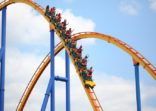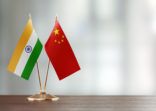With the global spread of Covid-19, major changes in T Rowe Price’s Dynamic Global Bond Fund were made to limit the portfolio’s volatility, according to Joran Laird, Hong Kong-based global fixed income portfolio specialist.
“At the beginning of this year, we were upbeat as we saw global purchasing managers’ indices (PMIs) looking good, and you had a number of uncertainties resolved in the market. The likes of a hard Brexit was resolved, and the US-China phase I trade deal was in place. But with the coronavirus spreading globally, that was a complete game-changer,” he told FSA recently.
The Dynamic Global Bond Fund, which is managed by Arif Husain, is a tactical product with a three-to-six-month investment horizon. Its portfolio has three major components: “core stable positions”, which are mostly high-quality global government bonds, “return-seeking positions”, which include emerging market bonds and currencies; and defensive hedges, according to Laird.
He explained that at the start of the year, the portfolio had net return-seeking positions.
“But we completely had the wrong positions and wanted to move from net return-seeking to net defensive.”
Short positions
The fund, which is not available for retail sale in Hong Kong and Singapore, makes use of various defensive hedges to limit the portfolio’s volatility, Laird said. They include taking short positions in the fixed income market; being long in defensive currencies, such as the Japanese yen; increasing duration in high-quality treasuries and buying put options in the equity markets.
During the first three months, the fund dialled-up its defensive hedges, which include taking short positions in US and European investment grade and high yield bonds. It also took more long positions in safe-haven currencies and short positions in risky emerging market currencies.
“Those hedges started to increase in value quite dramatically in February,” he said.
The overall duration of the fund was also increased to five years from just half a year, he added.
Meanwhile, return-seeking positions were dialled down.
“At the beginning of this year, we saw good opportunities in emerging market currencies. But now, we don’t have the same outlook.
“Today, we have significantly reduced and almost eliminated emerging market currency exposures.”
The changes in the portfolio yielded positive returns for the fund. Year-to-date ending 25 May, the fund has performed 5.03%, according to data from FE Fundinfo. On the other hand, the sector average for global fixed income funds sold in Singapore is -2.59%.
Laird explained that the portfolio’s defensive hedges were the largest alpha contributors of the fund during the first quarter.

“These defensive hedges are designed to kick-in and provide a payoff when things go bad in the markets,” he said.
However, he noted that defensive hedges can be detractors when markets are doing well. For example, in December, among the largest detractors of the fund were short positions in the investment grade and high yield space.
“When markets are doing well, any kind of defensive hedge that you have in place is going to be a cost and is not going to work for you,” he said.
The T Rowe Price Dynamic Global Bond Fund versus its benchmark and sector in Singapore


















